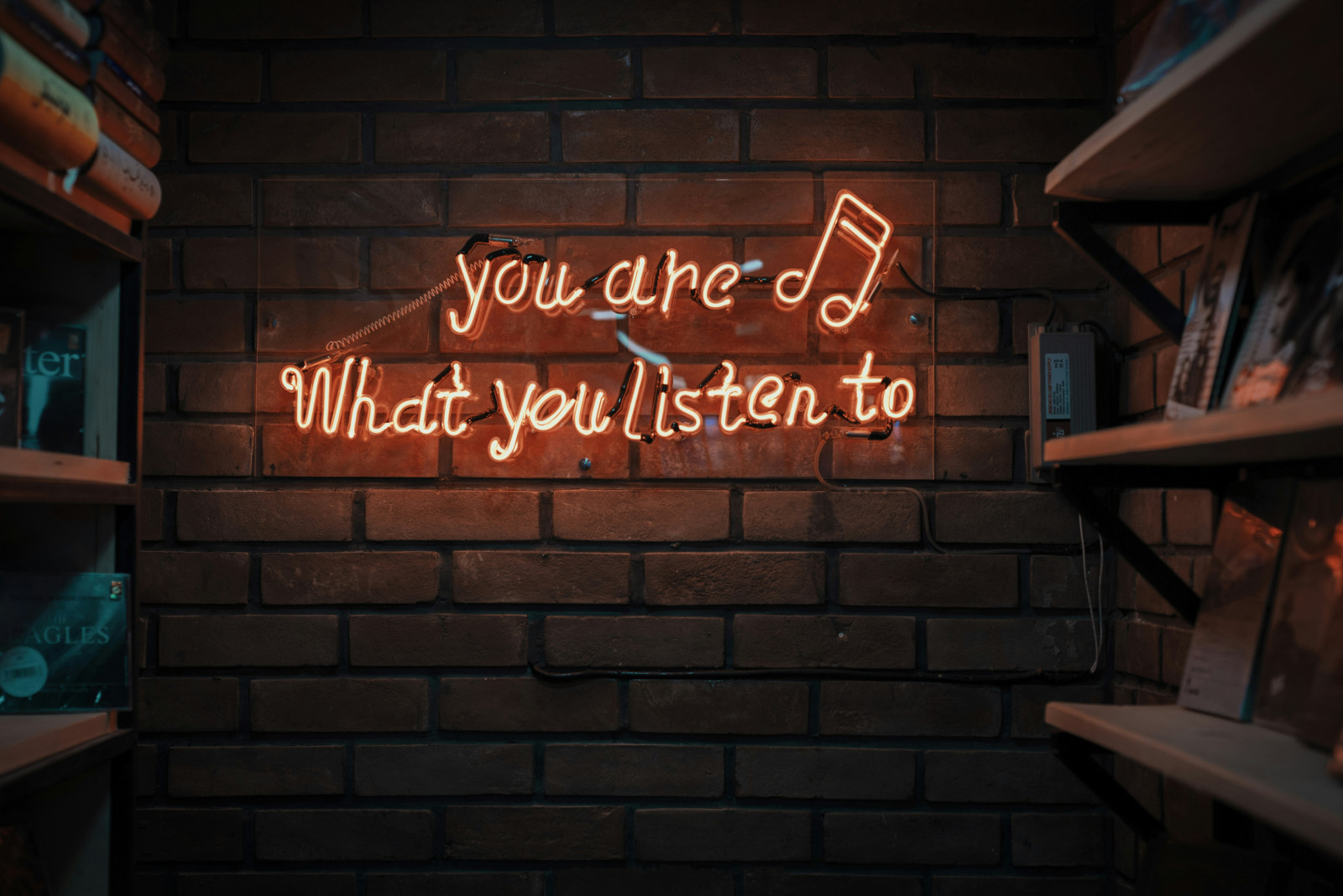The unflattening of music

[This post builds on two other recent MIDiA posts: Background music and What got you here]
At the half way point of the decade it is a good time to reflect on how the business of music is reshaping the culture of music – and where this is heading.
Streaming – and the ecosystems it feeds / feeds from ≠ has done as much to music culture in ten years as the phonograph and record player each did in half centuries. Of course, streaming would not have been possible without those prior inventions, but it has reached far more people, with more music, more frequently, and with more listening time.
Most importantly, by pulling consumption, creation, and monetisation closer together than ever before, streaming has transformed the tense but often distant relationship between business and culture into one that now resembles a single entity. People make, and are encouraged to make, music that feeds the machine. This has resulted in what is often referred to as the flattening of music, which is most visible in the rise of ‘functional music’ and of the song over the artist. It is a process that can feel both inevitable and unstoppable.
At the start of the year I posted a remarkably evergreen quote from Jaques Attali’s 1985 book Noise:
“Fetishized as a commodity, music is illustrative of the evolution of our entire society: deritualize a social form, repress an activity of the body, specialize its practice, sell it as a spectacle, generalize its consumption, then see to it that it is stockpiled until it loses its meaning.”
The fact that this was written long before the internet and music collided illustrates that streaming’s effect is not an isolated phenomenon but part of a much longer continuum. The 1980s was the decade in which the CD supercharged the commercialisation of music and the Walkman kick-started today’s dominant ‘always on, everywhere’ paradigm. While streaming is massively accentuating trends, it is not creating them. Indeed, the whole idea of music as background filler is at least centuries old. For example, 800 years ago Eleanor of Acquitaine hired minstrels to soundtrack her daily court life. More recently, French composer Eric Satie wrote three pieces of music in 1917 that he called ‘furniture music’ specifically designed to be background music.
However, music has never been shunted so far into the background as it is now, including music that was intended for the foreground. It is driven by a vicious / virtual circle of influence of consumer behaviour and the algorithm. As Jeffrey Antony puts it in his 2024 piece ‘The Great Flattening’:
Featured Report
Cultural movements A new take on mainstream for the fragmentation era
Entertainment has become nichified, mainstream has become smaller, and audiences have fragmented. While this has been crucial to the rise of the long tail and the creator economy, there is a need for a...
Find out more…“These algorithms are designed to keep users engaged with the platform, ensuring that music remains a background experience rather than a foreground focus.”
Spotify shifted its business model and user experience in pursuit of this paradigm, further fueling it with lower-cost production music (often termed as ‘fake artists’). Antony argues that this has moved music from being “deeply personal” to “commodified [and] disposable”.
Meanwhile Daniel Ek mused that some music has a short shelf life and other music a long one. But music has always been both highly personal and commodified. Before streaming, radio was the main way most people heard music most of the time. Radio listening was often commodified background filler but the exact same songs could be deeply personal when listened to in a different way.
The difference is that today, streaming is catering for both the deeply personal and commodified in the same platform while the behaviour / algorithm circle is nudging the needle ever further away from personal. As one writer puts it in The Mighty Pluck: “This is the blurred scenery of my life.”
There are very clear and obvious commercial rationales at play (lowering rights costs, fragmenting rightsholder power, increasing platform power, etc.). Howevever, it would be wrong to assume that this is all about the “fuelling the global circulation of capital”. It is also part of a much wider trend of digital platforms being terrified of losing users and their time in the saturated attention economy. In a digital economy defined by convenience, everyone wants to remove friction, which often means making decisions on users’ behalf.
It results in a strategy of seeking not to offend rather than to delight. Nowhere is this better seen than Elon Musk’s suggestion that the most important metric of all is “Unregretted user minutes”. If one statement summarises the path towards the absolute reduction of culture, it is that.
Generative AI threatens to accelerate the trend even further. However, the seeming inevitability of all of this is only possible because of streaming’s fusing of business and culture. It is possible that algorithmically charged, functional, and generative music will become most (even all) of music in the future. But it is not yet. And it would only be able to get to that point because everyone else (labels, artists, publishers, songwriters) is, to some degree or another, playing by the new rules, terrified of missing out on audience and revenue / income. They play by these rules because the system is defined by being optimised for monetisation.
But what happens when monetisation stops working? The whole edifice comes tumbling down. It is incumbent on the system to manage the transition, so that by the time monetisation is completely broken, it is too late for a withdrawal of creative labour to break it, because the traditional creator’s role is no longer crucial or at least decisive. It might just be that the cracks in the monetisation machine are appearing early enough to change the trajectory.
With streaming growth slowing, larger rightsholders are doing everything they can to optimise including making it harder for longer tail creators and rightsholders to earn from their work. This adds to the already-growing difficulty many mid and long-tail creators have making streaming’s fractionalised royalties add up. Streaming services may not yet realise it, but they are breaking music’s 21st century social contract. Creative labour has thus far been given despite deteriorating conditions because value was returned. As value diminishes, more artists are beginning to question why they should give their labour any longer.
We are already seeing more artists going non-DSP (e.g,. Ricky Tinexz, SEIDS, Mary Spender), triggering the start of the bifurcation of the music business, with an emerging generation of creators bypassing streaming entirely. Meaning that the foundations of tomorrow’s music culture are being laid elsewhere. It may only be a trickle for now, but already, one of the most critically acclaimed albums of 2024, Cindy Lee’s Diamond Jubilee, was pointedly not released onto streaming. How long before the trickle of streaming exiles becomes a flood?
What makes the non-DSP world so important for the unflattening of music is not the absence of algorithm (because there are plenty of those there too) but: a) the diversity of models (bandcamp, TikTok, SoundCloud) and b) being different and distinct is a feature not a bug.
Music business and culture are flattening, no doubt. The tide can be turned but it will not happen on its own. It will take both commercial and creative bravery. It will require a new social contract for music and it will be a long, tough fight. Not least because consumers (the actual people doing the listening) are not exactly throwing their hands up in dismay at having music that soundtracks the mundanity of their daily lives.
Yet, streaming may also hold the key to reversing the trend. Today’s music creators have a far bigger and more diverse musical canon to call upon than in any previous generation. Yesterday’s artists’ influences stemmed from inherently limited sources (their parents’ and friends’ record collections, their local record store, etc.). Today’s can listen to virtually every song ever written. The history of music is a steady evolution, with each generation of genres imitating and innovating the previous one. Now, creators can pull from over a hundred years’ worth of popular music, thousands of genres and millions of artists to create their own, unique take on just what music is.
Streaming may have made itself the (flattened) establishment –but the thing about the establishment is that culture almost always rebels against it.


There is a comment on this post, add your opinion.